Beginnings of Roman London discovered in office basement
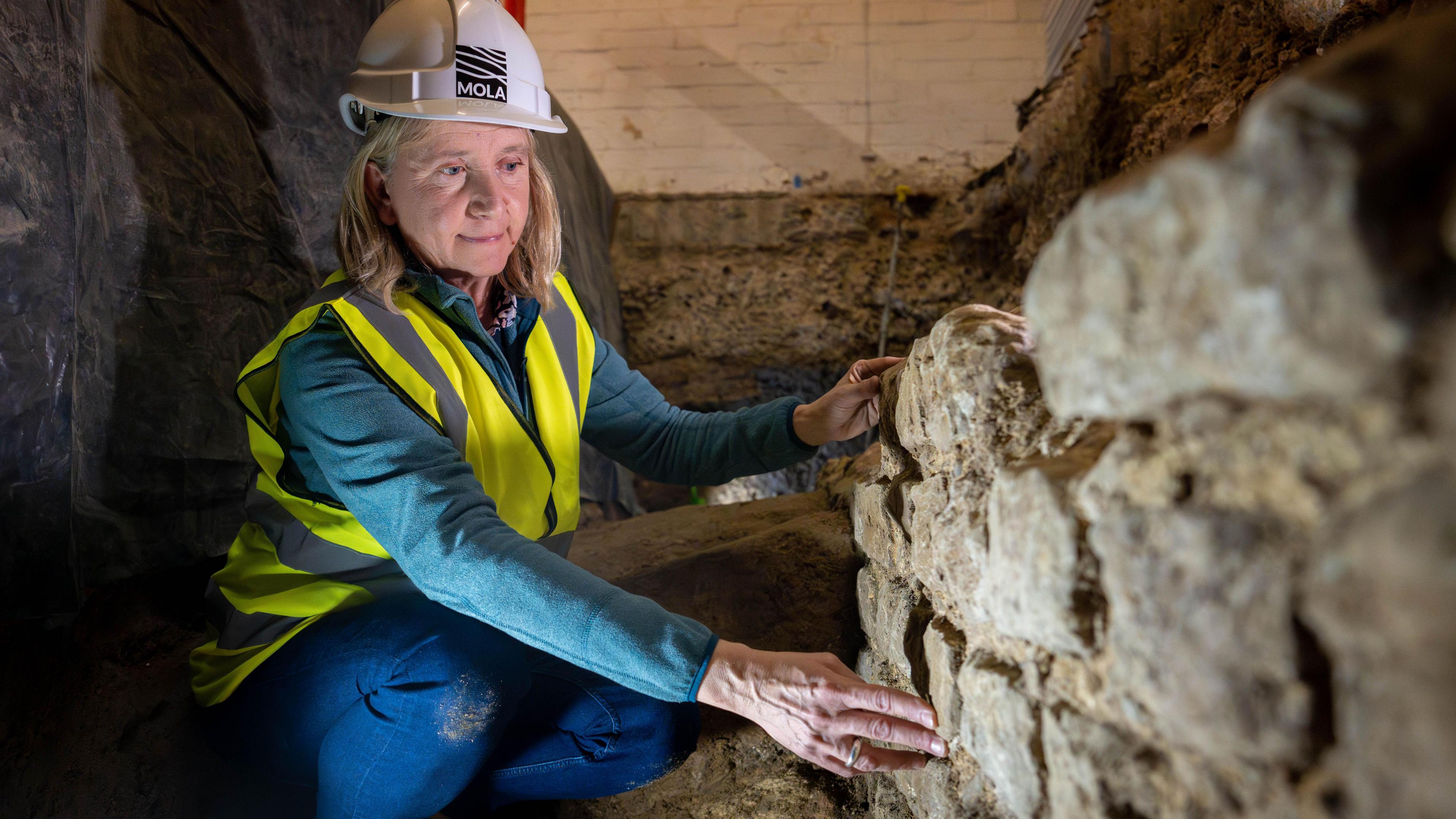
The wall is 2,000 years old and was part of Roman London's first basilica
- Published
A discovery underneath the basement of an office block has been described as one of the most important pieces of Roman history unearthed in the city of London.
Archaeologists have found a substantial piece of the ancient city's first basilica - a 2,000 year old public building where major political, economic and administrative decisions were made.
The excavation has so far revealed sections of stone wall that formed the base of the basilica, which would have been two-and-a-half storeys high.
The site, which will eventually be opened to the public, sheds light on the city's beginnings.
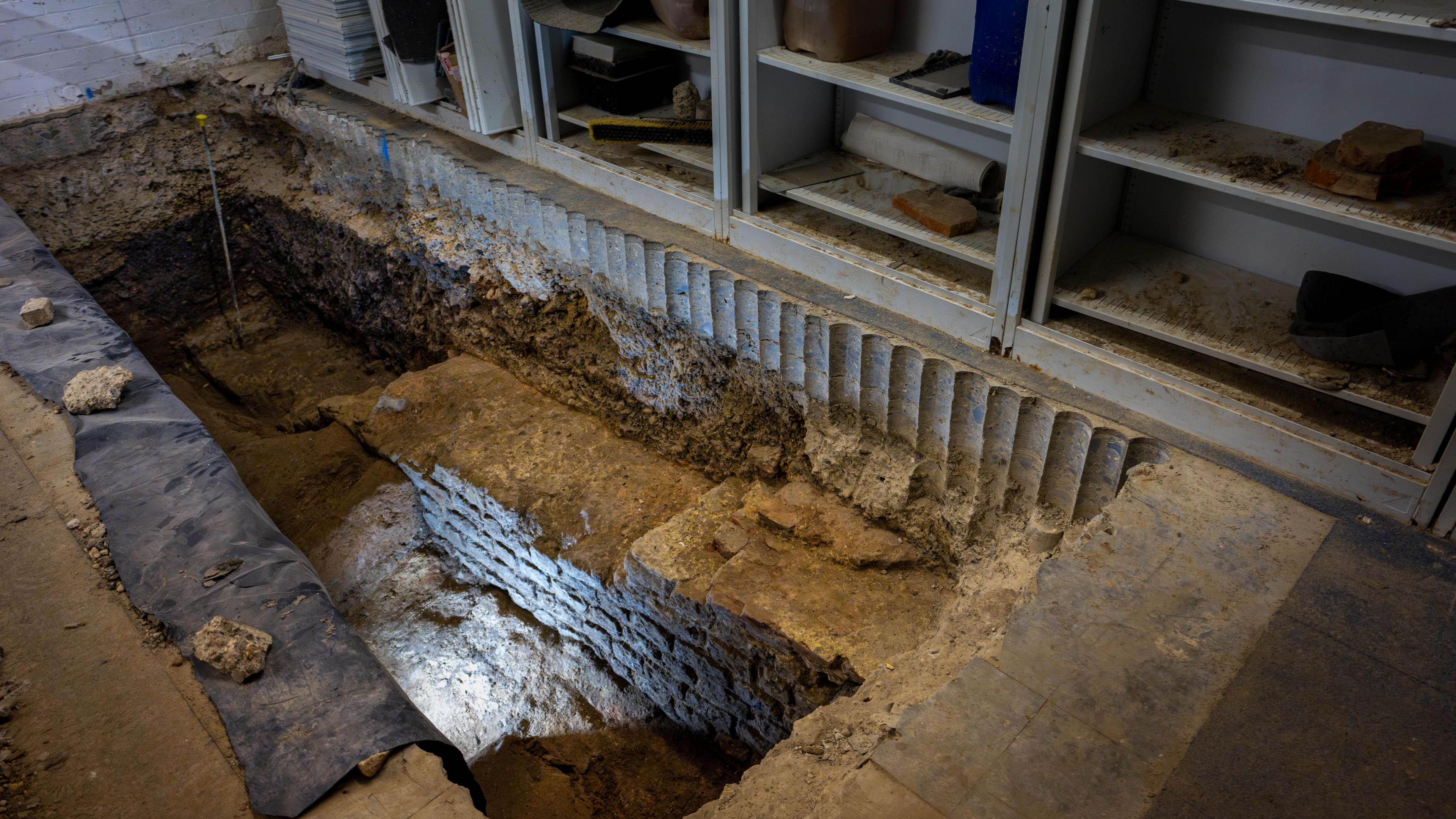
Archaeologists found the Roman masonry under the concrete floor of the office
"This is so significant - this is the heart of Roman London," said Sophie Jackson, from the Museum of London Archaeology (Mola), who revealed the new find exclusively to BBC News.
"This building will tell us so much about the origins of London, why London grew and why it was chosen as the capital of Britain. It's just amazing."
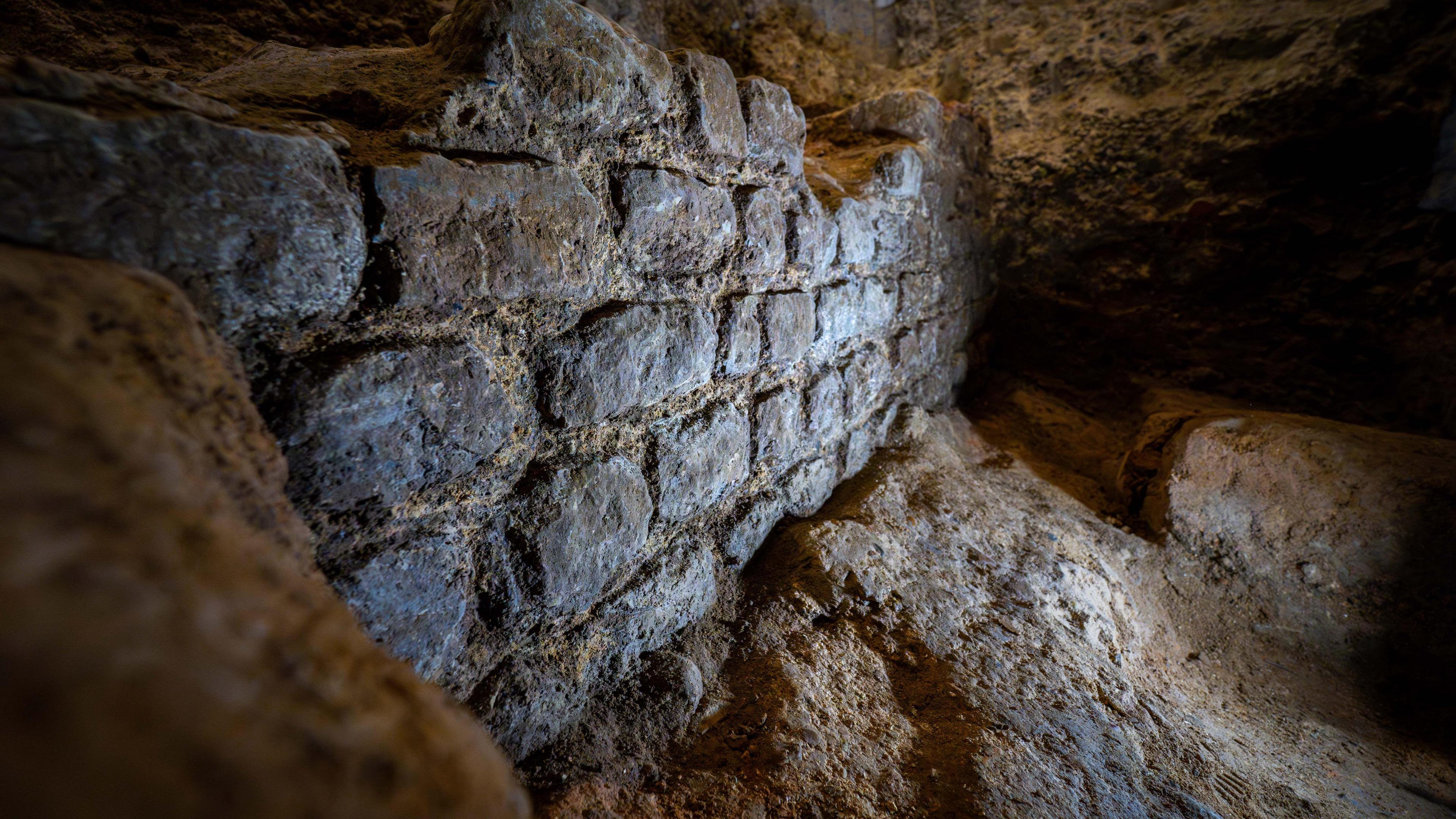
The wall is made of limestone from Kent
The site was discovered at 85 Gracechurch Street, an office building that's about to be demolished and redeveloped.
Earlier archaeological investigations revealed the ancient basilica's approximate location, so the team created several small test pits to see what was hidden beneath the concrete floor.
On the third attempt, digging between the filing cabinets, they struck lucky.
"You can see a huge chunk of Roman masonry, and it's incredible that it survives this well. We're absolutely thrilled that there's so much of it here," said Sophie Jackson.
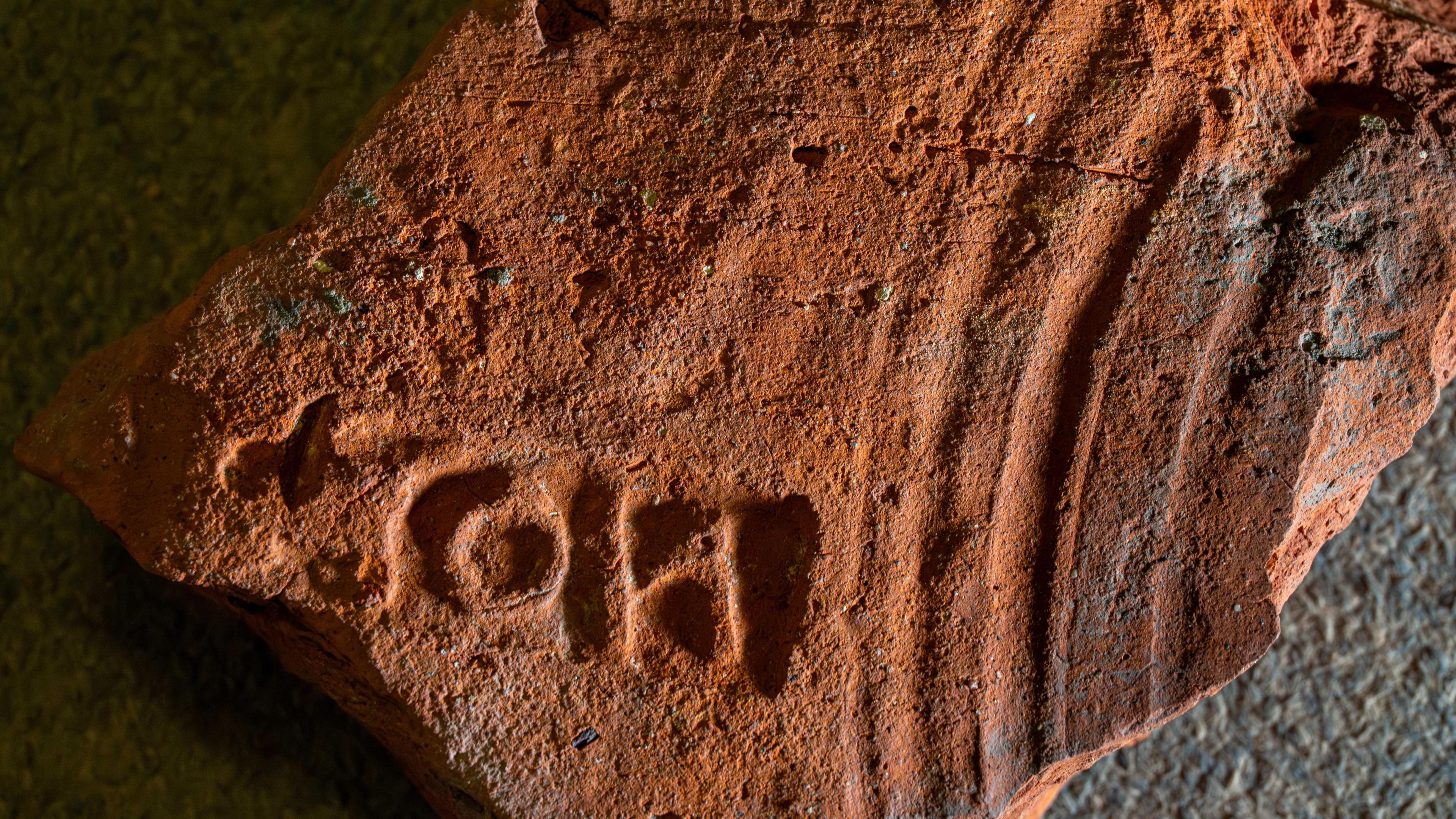
A tile is stamped and the three lines next to it are the finger marks of the tile maker
The wall is made from a type of limestone from Kent, and formed an imposing building - the basilica would have been about 40m long, 20m wide and 12m high.
Other artefacts have been found too, including a roof tile imprinted with the stamp of an official from the ancient city.
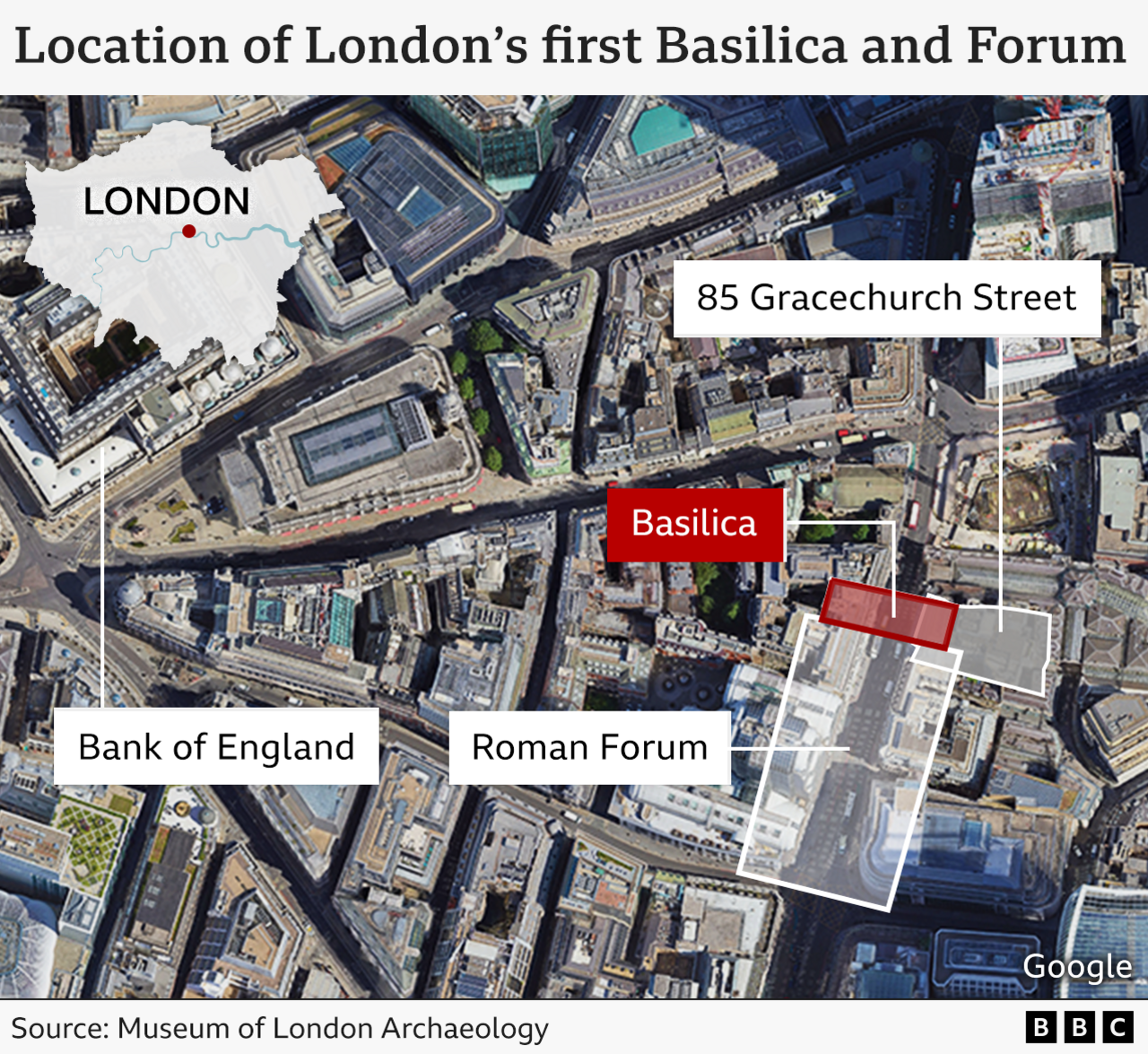
The basilica was part of London's forum, a social and commercial hub with a courtyard that was about the size of a football pitch.
"The basilica is the town hall, and then in front of it was a big open market square with a range of shops and offices around the outside," explained Ms Jackson.
"It's the place you came to do business, to get your court case sorted out, it's where laws were made, and it's where decisions were made about London, but also about the rest of the country."
It was built around 80 AD, just a few decades after the Romans invaded Britain and founded Londinium - the Roman name for the city.
But the first basilica and forum were only in use for about 20 years. They were replaced by a much larger second forum, perhaps reflecting how quickly the city was growing in size and importance.
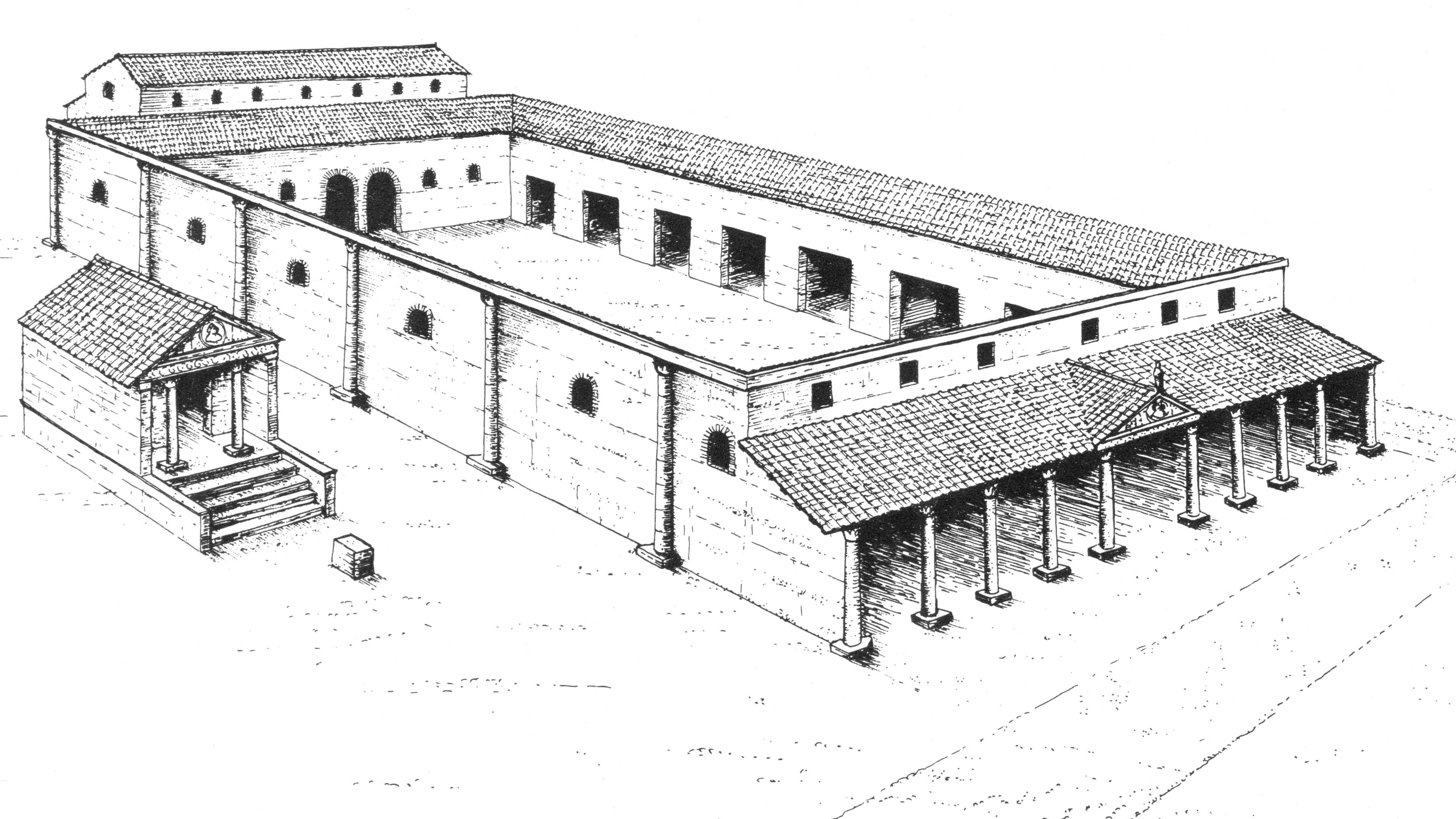
The basilica sits at the back of the Roman forum, which had an open courtyard
The discovery has meant a change of plans for the building's owners, Hertshten Properties.
The Roman remains, which will now be fully excavated, are to be incorporated into the new offices - pending planning approval - and opened up to the public.
For the architects, redesigning a building around an archaeological site has had some technical challenges.
"The scheme has been comprehensively adjusted," explained James Taylor from architecture firm Woods Bagot.
"Simple things like the columns have had to literally move position, so you're not destroying all these special stones that we found in the ground."
And so as not to disturb what's there, fewer lifts can now be installed - and this has meant that the team has had to reduce the height of the building.
But Mr Taylor said the effort will be worth it.
"To actually see people using and enjoying the space, moving through the public hall and down to see the remains, will be absolutely incredible."
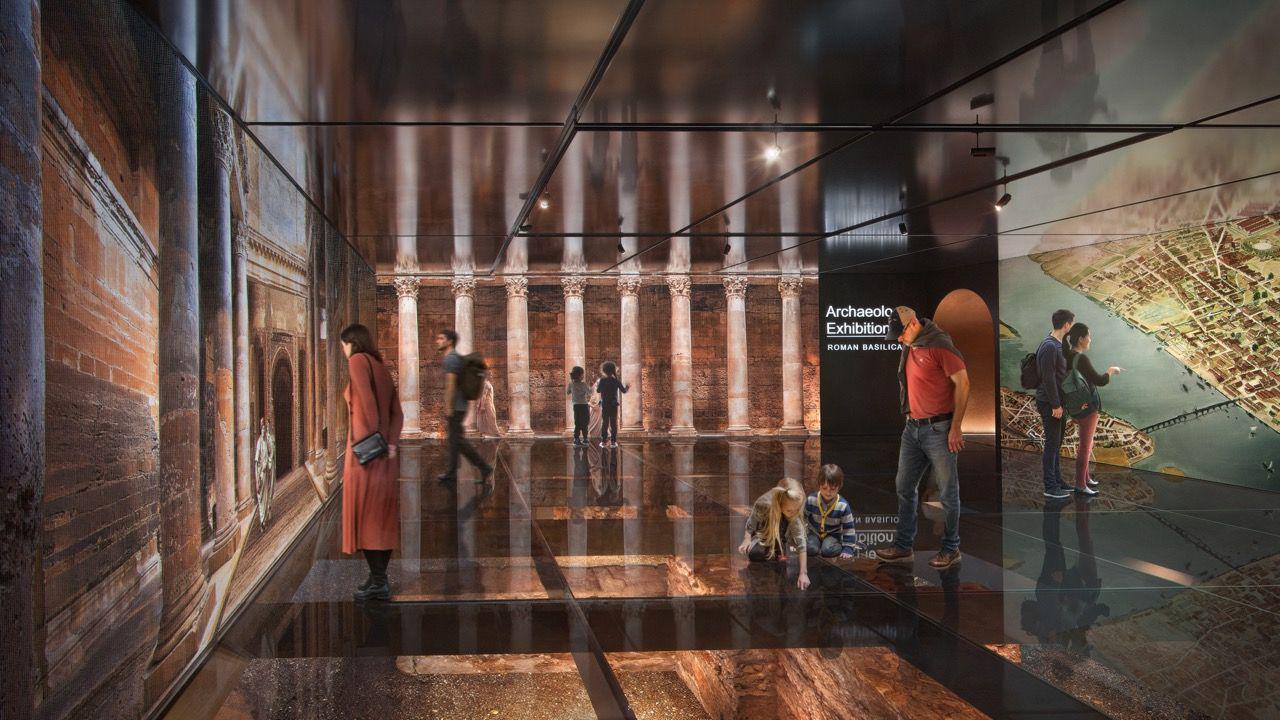
An artist's impression of what the public will eventually be able to see
This is the latest piece of Roman history to be discovered lying beneath the streets of London's Square Mile. And there's a growing effort to find innovative ways to show these sites to the public.
Parts of an amphitheatre are on display under a glass floor at the Guildhall Art Gallery, and at Bloomberg's offices, people can visit the Temple of Mithras, which has been brought to life with an immersive sound and light installation.
Chris Hayward from the City of London Corporation says he wants more people to experience the link between the past and the present.
"The fact that Roman London is beneath your feet is, frankly, quite a remarkable emotion to experience," he said.
"You can actually see and visualise how Roman London would have been in those times. And then you can walk outside and you can say, 'now look at the skyscrapers, now look at the office blocks', this is progress, but at the same time, progress combined with preservation."